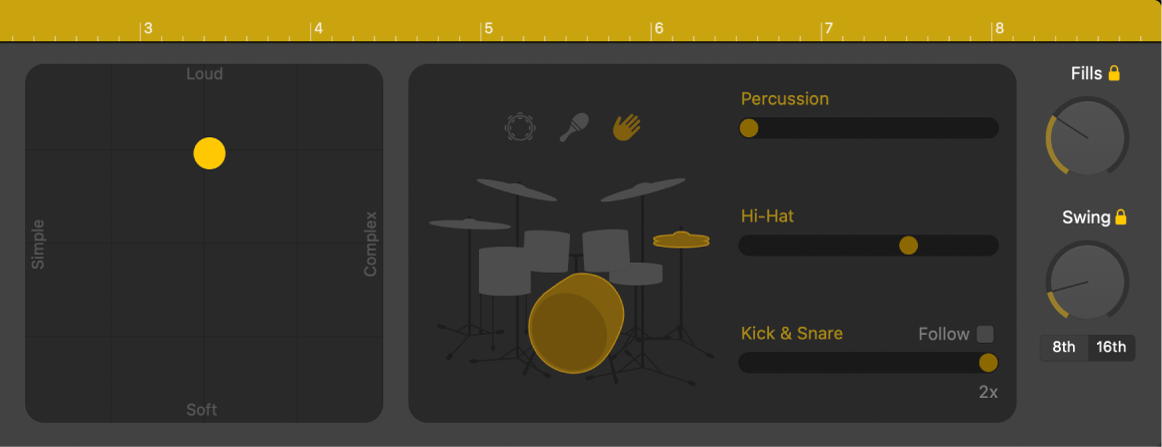
- GENERAL MIDI PLAYER EDITOR FOR MAC WITH GM INSTRUMENTS INSTALL
- GENERAL MIDI PLAYER EDITOR FOR MAC WITH GM INSTRUMENTS GENERATOR
- GENERAL MIDI PLAYER EDITOR FOR MAC WITH GM INSTRUMENTS FREE
- GENERAL MIDI PLAYER EDITOR FOR MAC WITH GM INSTRUMENTS WINDOWS
GENERAL MIDI PLAYER EDITOR FOR MAC WITH GM INSTRUMENTS WINDOWS
Windows x86 (32-bit) / MuseScore x86: %ProgramFiles%\MuseScore 3\sound\MuseScore_General.sf3.This directory and its default SoundFont file is: In contrast to user-added SoundFonts, the initial default SoundFont installed with MuseScore is located in a system directory, meant only for that purpose, which should not be modified. macOS and Linux: ~/Documents/MuseScore3/Soundfonts.Windows: %HOMEPATH%\Documents\MuseScore3\Soundfonts.This directory can be viewed or changed in MuseScore's Preferences, but the default location is:
GENERAL MIDI PLAYER EDITOR FOR MAC WITH GM INSTRUMENTS INSTALL
In either case, when the dialog appears asking if you want to install the SoundFont, click "Yes" to place a copy of the SoundFont file in MuseScore's SoundFonts directory. Occasionally an application other than MuseScore will be associated with the SoundFont file type if this is the case, you will need to right-click or Ctrl-click on the file, so as to display a menu from which you can choose to open the file in MuseScore. In most cases, the SoundFont file type will already be associated with MuseScore, and MuseScore will start and a dialog will appear asking if you want to install the SoundFont. Install a SoundFontĪfter finding and decompressing a SoundFont (see → below), double-click to open it. MuseScore comes with MuseScore_General.sf3, it contains over 128 instruments, sound effects and various drum/percussion kits, its program / preset numbering follows GM ( General MIDI) convention. SFZ (.sfz): A set of audio and definition files containing one or more virtual instruments.SoundFont (.sf2/.sf3): A single file containing one or more virtual instruments.OverviewĪudio playback is created by Synthesizer using virtual instruments, MuseScore supports virtual instruments in two formats:
GENERAL MIDI PLAYER EDITOR FOR MAC WITH GM INSTRUMENTS FREE
Jump to a curated list of free soundfonts downloadable, feel free to add to the list. To export a MIDI or audio file, visit Open/Save/Export/Print.
GENERAL MIDI PLAYER EDITOR FOR MAC WITH GM INSTRUMENTS GENERATOR
The awesome XYbeatZ midi drum generator uses midi drum formatting so using the GM player as your sound source is a good place to start when working with this device. If you have a drum midi file the different parts of the drum kit are mapped to the midi specifications for playback. A good choice when drawing in your own beats as well.

You can also find some useful Drum Kits in the GM Player like a basic 808 kit, jazz, rock and orchestral sets as well as percussion. In this example we selected a chord midi file from the Keyboard folder in the Sound Library and selected a Chior Sound to use as a sound pad for this track. It is a bass line so the midi notes are in a low register so a low tonal instrument will sound more natural, if that is what you want. You can select the Instruments in the drop-down menu and they are organized in instrument type groupings.įor example, if we load in the first midi file in the Bass folder from the Sound Library, you can experiment with lots of different instruments to find one to your liking. GM Player contains over 125 instruments and to make the studio launch faster they are loaded upon request in the device chain. GM Player stands for General Midi and it is a standard protocol of virtual instruments for midi playback. This week let´s take a look at the GM Player in Amped Studio.


 0 kommentar(er)
0 kommentar(er)
